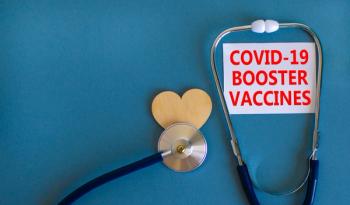
Prevalence of COVID-19 and Transmission Between Childcare Centers, Households is Low, Study Finds
Authors of a recent JAMA Network Open study expressed there have been few reported COVID surveillance studies of childcare centers and none in the U.S. Authors stress that it's essential for policymakers to understand the real risk of COVID spread in CCCs and households so they can apply suitable mitigation measures if there were to be another surge or new variants to come about.
The occurrence of COVID-19 and transmission between childcare centers (CCC) and students’ households is low, according to a recent study published in
Children younger than 5-years-old made up a higher proportion of COVID-19 cases in the United States in late 2021 and early 2022 than earlier in the pandemic, according to the study’s authors.
Alone, children in childcare and schools have been and can transmit many infectious diseases, like influenza, to household contacts and to those in the community.
The Centers for Disease Control and Prevention (CDC) and local health departments have recommended school or CCC closures, mandatory COVID testing in CCCs and extended exclusion and quarantine periods to control COVID-19 prevalence and limit the spread of the virus.
Though, to date, study authors expressed there have been few reported COVID surveillance studies of CCCs and none of U.S. CCCs.
It's essential for policymakers to understand the real risk of COVID spread in CCCs and households so they can apply suitable mitigation measures if there were to be another surge or new variants to come about.
To have further knowledge of COVID-19 incidence and transmission in children attending CCCs, their childcare providers (CCPs) and household contacts, researchers of the study conducted a prospective surveillance cohort study from April 22, 2021, through March 31, 2022.
Monitored were 11 CCCs in Pittsburgh, Pennsylvania and Ann Arbor, Michigan. Four centers were university affiliated, and 7 were private.
In the beginning of the study, COVID vaccines were only available for adults but not for children younger than 5-years-old. However, in November 2021, 5-year-old children became eligible to receive the vaccine.
Between all surveillance groups, COVID incidence, secondary attack rates and transmission patterns were documented from diary entries, self-reports to CCC directors and case logs. Incidence rate ratios were measured using Poisson regression clustering on centers with a random intercept and unstructured matrix.
Based on these methods, it was found that 83 children in 11 CCCs and their household contacts (118 adults and 16 children) and childcare providers (21), COVID-19 incidence was at 16% and secondary attack rates at CCCs were at 2.7%-3% compared with 50% and 67% among household child and adult contacts.
Of 30 household cases, only five (17%) were secondarily acquired from three students infected at the CCCs.
Study authors suggest that children in CCCs play a small role in COVID transmission into their households and that current testing and recommendations for CCCs should also be included with those for other respiratory viruses with similar morbidity and greater rates.
Newsletter
Get the latest industry news, event updates, and more from Managed healthcare Executive.


















































